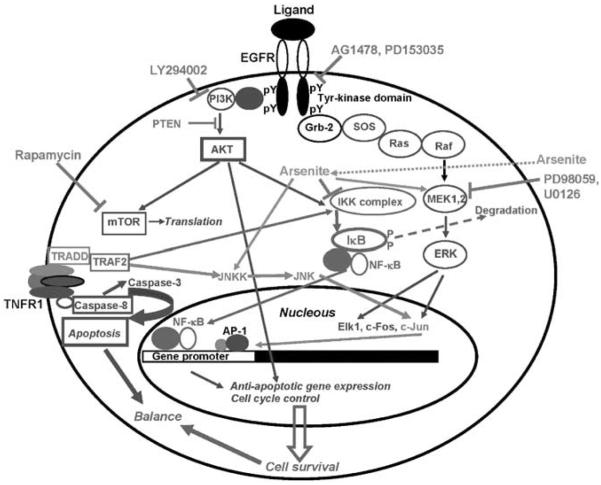Figure 7.
Kinase targets and inhibitors. A schematic illustration of the principal signaling pathways that are affected by the inhibitors, which are described in this paper. Protein tyrosine kinase activity of EGFR is inhibited with AG1478 or PD153035. Downstream events of EGFR-mediated signaling include a formation of multisubunit scaffold complex with the activation of the Ras-Raf-MEK-ERK pathway. PD98059 and U0126 are specific inhibitors of MEK1/2. The PI3K-AKT pathway that is initiated at the active EGFR can be suppressed with pharmacological inhibitor LY294002 or with the endogenous inhibitor PTEN. The MEK-ERK and PI3K-AKT pathways activate the specific sets of transcription factors, which are involved in the antiapoptotic and cell-cycle gene expression. AKT also regulates general protein translation via mTOR kinase, which is sensitive to rapamycin. The TNFR-mediated signaling induces via adaptor proteins IKK activity followed by phosphorylation and proteasome-dependent degradation of IκB, and release and nuclear translocation of NF-κB, which regulates the expression of many different genes, including antiapoptotic genes. Simultaneously, the TNFR-mediated signaling may activate caspase-8/caspase-3 proapoptotic pathway; at normal conditions, however, this pathway is suppressed by the NF-κB-dependent antiapoptotic proteins. Arsenite upregulates the MAPK pathways, but eventually suppresses IKK-NF-κB activation affecting a balance between cell survival and apoptosis

